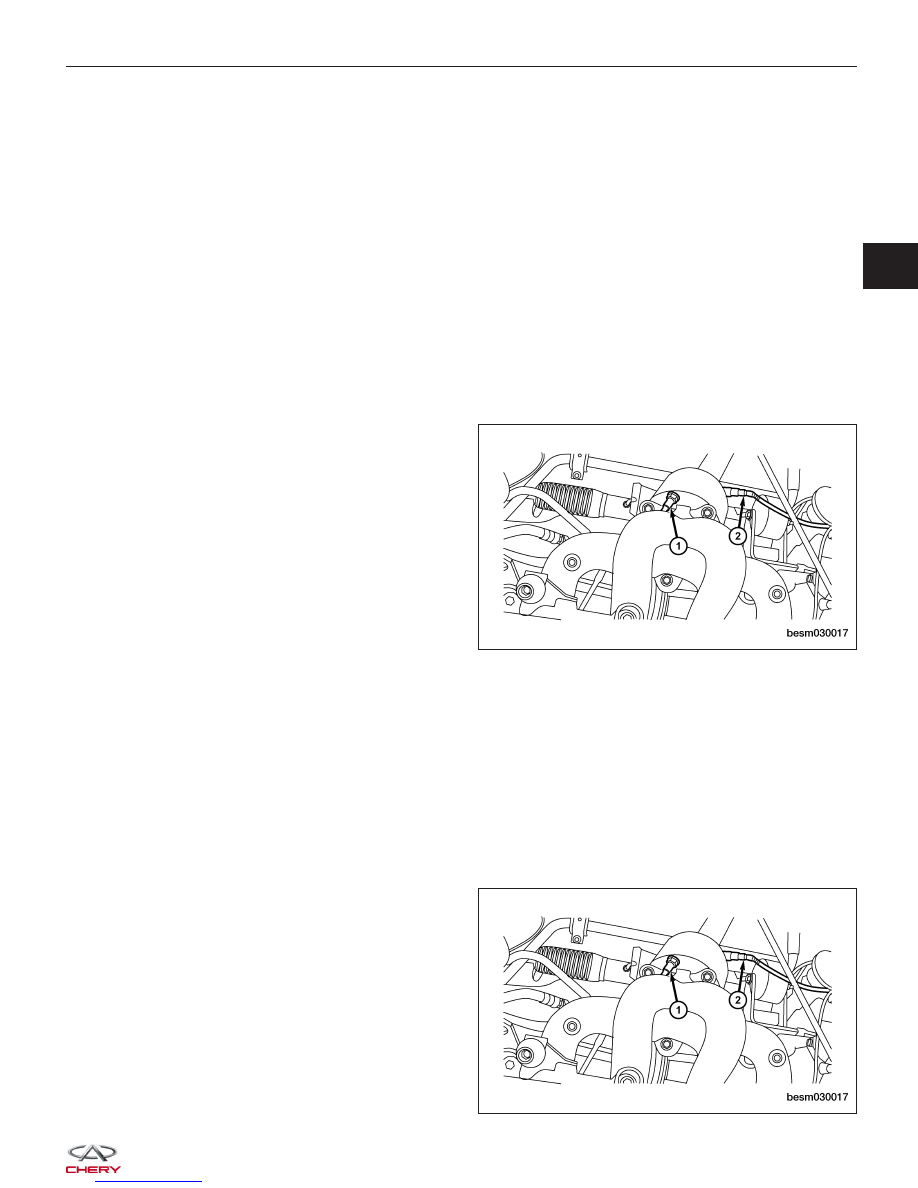Chery Tiggo. Manual - part 179

Upstream Oxygen Sensor
The input from the upstream heated oxygen sensor tells the Engine Control Module (ECM) the oxygen content of the
exhaust gas. Based on this input, the ECM fine tunes the air-fuel ratio by adjusting injector pulse width.
Downstream Oxygen Sensor
The downstream heated oxygen sensor signal is used to detect catalytic convertor deterioration. As the convertor
deteriorates, the signal from the downstream sensor begins to match the upstream sensor signal except for a slight
time delay. By comparing the downstream heated oxygen sensor signal to the signal from the upstream sensor, the
ECM calculates catalytic convertor efficiency. This calculation is also used to establish the upstream O2 goal voltage
(switching point).
Removal & Installation - Upstream Oxygen Sensor
1. Disconnect the negative battery cable.
2. Disconnect the oxygen sensor electrical connector.
CAUTION:
Remove the oxygen sensor after the exhaust pipe has cooled.
3. Remove the upstream oxygen sensor (1).
(Tighten: Upstream oxygen sensor to 45 N·m)
4. Installation is in the reverse order of removal.
Installation Notes:
• Before installing the oxygen sensor, coat the threads with rust inhibiting lubricant.
Removal & Installation - Downstream Oxygen Sensor
1. Disconnect the negative battery cable.
2. Disconnect the oxygen sensor electrical connector.
CAUTION:
Remove the oxygen sensor after the exhaust pipe has cooled.
3. Remove the downstream oxygen sensor (2).
(Tighten: Downstream oxygen sensor to 45 N·m)
ON-VEHICLE SERVICE
BESM030017
BESM030017
03